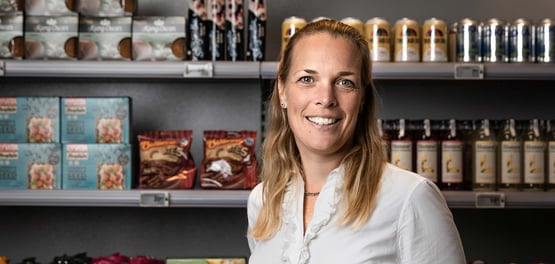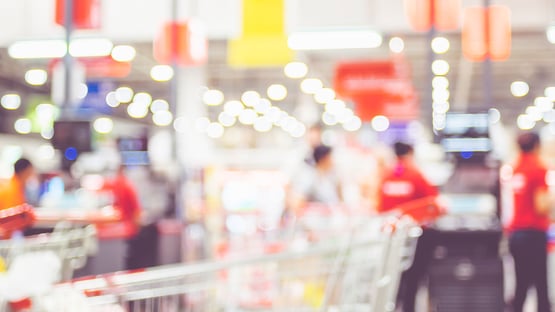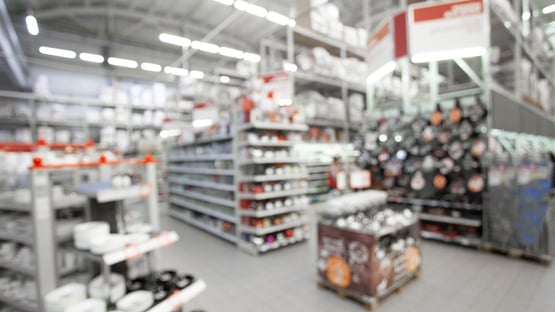Increased e-commerce, price conscious consumers and the need to combat food waste. These are trends that drive the need for store digitalization, says Helena Holmgren, Pricer’s CEO, in an interview with the Swedish business magazine Dagens Börs.
The full interview with Helena Holmgren is published here (in Swedish). Below is an English summary.
What can you tell us about Pricer’s history?
This year, Pricer celebrates 30 years and was one of the first companies in the world in our industry, electronic shelf labels, ESL. When Pricer was founded in Uppsala in 1991, the inflation rate in Sweden was high and price changes in the stores were frequent.
The situation was similar in other countries as well. The high inflation and the many price changes were the driving force behind Pricer. The business concept was to offer retailers a wireless system for automated price changes.
The solution streamlined store operations and the benefits for retailers were obvious, as they didn’t have to spend countless hours changing paper labels on each individual product. Also, the customers were satisfied as the prices at the checkout matched those on the shelfs.
The product development was done in close collaboration with the customers, which laid the foundation for the innovation culture and team spirit that still characterizes the company. We always work close to the customer and are sensitive to their needs.
The international expansion came early, and also became crucial for Pricer’s development, as large retail chains such as Metro Cash & Carry in Germany and Carrefour in France realized the importance of automating price management.
With 200 million labels installed in more than 17,000 stores in more than 50 countries, Pricer is today a world leader within ESL solutions.
What are the main features of the ESL system?
The system is an important part of the digitalization of retail. With Pricer’s digital solutions, labor intensive in-store processes are streamlined, prices are always up to date, and the customer experience is improved.
The pandemic has accelerated the need for store digitization, as retail has faced new challenges and demands from both consumers and authorities.
Pricer focuses on developing solutions that improve the efficiency of a number of labour intensive in-store processes, which in addition to price changing includes processes such as in-store picking of online orders, replenishment and inventory management.
What is Pricer Plaza and what are the major benefits?
Pricer Plaza is our cloud-based platform that was launched at the beginning of last year. It has been very well received by the market. Having business-critical systems connected to the cloud reduces the need for physical presence in the store and simplifies the flow of data between different systems.
It is also very easy to add new stores. The modularity makes it easy to add new functionalities as the need arises, which is particularly interesting for customers who want to use the system as an integral part of several different in-store processes.
How long is the buying process?
Buying an ESL system is generally a long process that varies depending on whether the purchase is made by an individual retailer or by a retail chain that can be either national or international. For a retail chain, it usually never takes less than a year, but sometimes the process takes significantly longer.
In addition to the size of the investment, the reason is that a large number of processes are affected when a store switches from a manual to an automatic process for price updates.
How much of the revenue is recurring?
Historically, a very small part of the revenue was generated from subscription services. During the past years, we have broaden our offering and today we can offer cloud-based solutions, such as Pricer Plaza and product positioning, which generate recurring revenues.
Within our product sales we also have recurring sales, even if it has slightly more uneven revenue streams than a subscription solution. These are primarily additional orders for labels when store designs are changed or replacement for labels that have broken.
Sales increased by +35% to SEK 389 million during Q2 – what was the reason for the increase?
There are several reasons. We see a sharp increase in the activity in several markets that were strongly affected by restrictions at the beginning of the pandemic, such as Italy and France.
We also see a very strong market growth in countries such as Canada where the penetration rate of ESL’s is low. The market is growing, and sales is spread over a large number of customers and geographies.
What are you most satisfied with and what could you have done better during the quarter?
We are always happy and proud when we receive renewed trust from existing customers. That means that the customer is satisfied both with the system and with Pricer as supplier.
Regarding what we could have done better, it should not be underestimated how challenging it is to work in a time of constantly changing conditions, both in terms of people’s mobility and the possibility to meet physically, and also the access to and pricing of raw materials and transport.
I am incredibly proud of the loyalty of all employees and the way they have dealt with these challenges. It’s our employees who enable our success.
What does the future market look like and what trends do you see?
Paper labels are increasingly being replaced by electronic shelf labels, but despite this, the penetration rate of ESL systems remains very low globally.
The low degree of penetration and the fact that price changing is one of the most important tasks in a store means that there are good chances for continued high market growth in the coming years. The pandemic has also accelerated the need for store digitalization in order to streamline tasks and meet new requirements and needs from customers.
We also see several trends that are driving the development. One example is the increased e-commerce, which means that consumers have ever higher demands on a smooth shopping experience even in the physical store, and they want to be able to easily find information on the store shelf.
We also see that consumers are more price-conscious and that they opt out of stores where the price at checkout differs from what is stated on the shelf. Consumers and retailers are also increasingly sustainability concious.
With our solutions, stores can reduce food waste by keeping track of expiration dates and adjusting the price when a product is about to expire. With the solution, the retailer can also get access to data that facilitates the planning of purchases.
We also see that large retail chains such as Carrefour and Tesco see digitalization as a strategically very important area, and other retailers must follow, not least in order to maintain profitability.
What will you focus on during the coming quarters?
Innovation is the best way to improve competitiveness, so we will continue to focus on developing new solutions, both in terms of our product offering and the services we provide.
We hope to be able to start meeting more physically as it is the best breeding ground for innovation. It is often in the unexpected meetings and dialogues that the best ideas are developed. You should never underestimate the meeting at the coffee machine.
Read the full article that was published on August 25, 2021 in Dagens Börs INTERVJUN: Helena Holmgren (VD) - Pricer - Dagens Börs (dagensbors.se)



